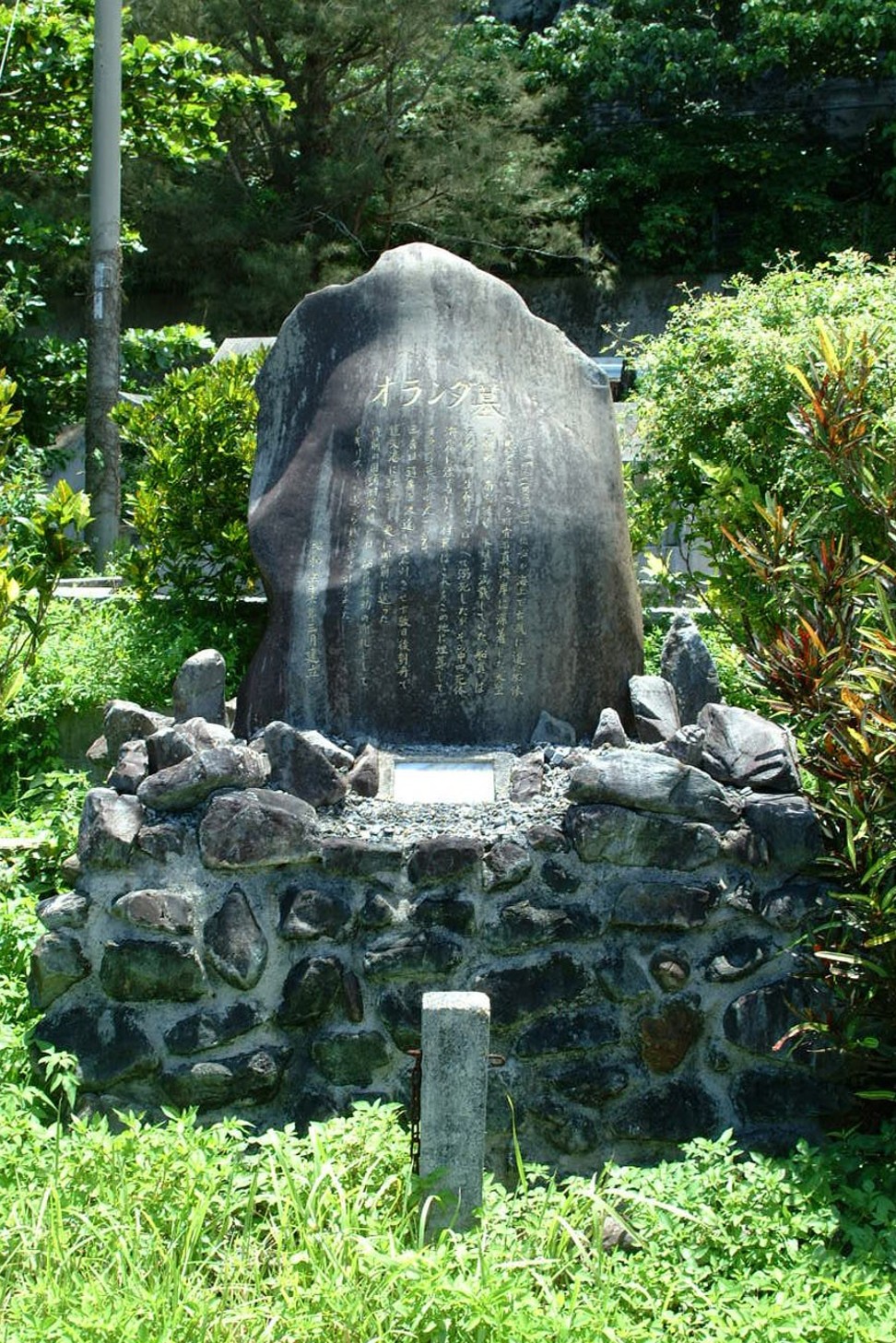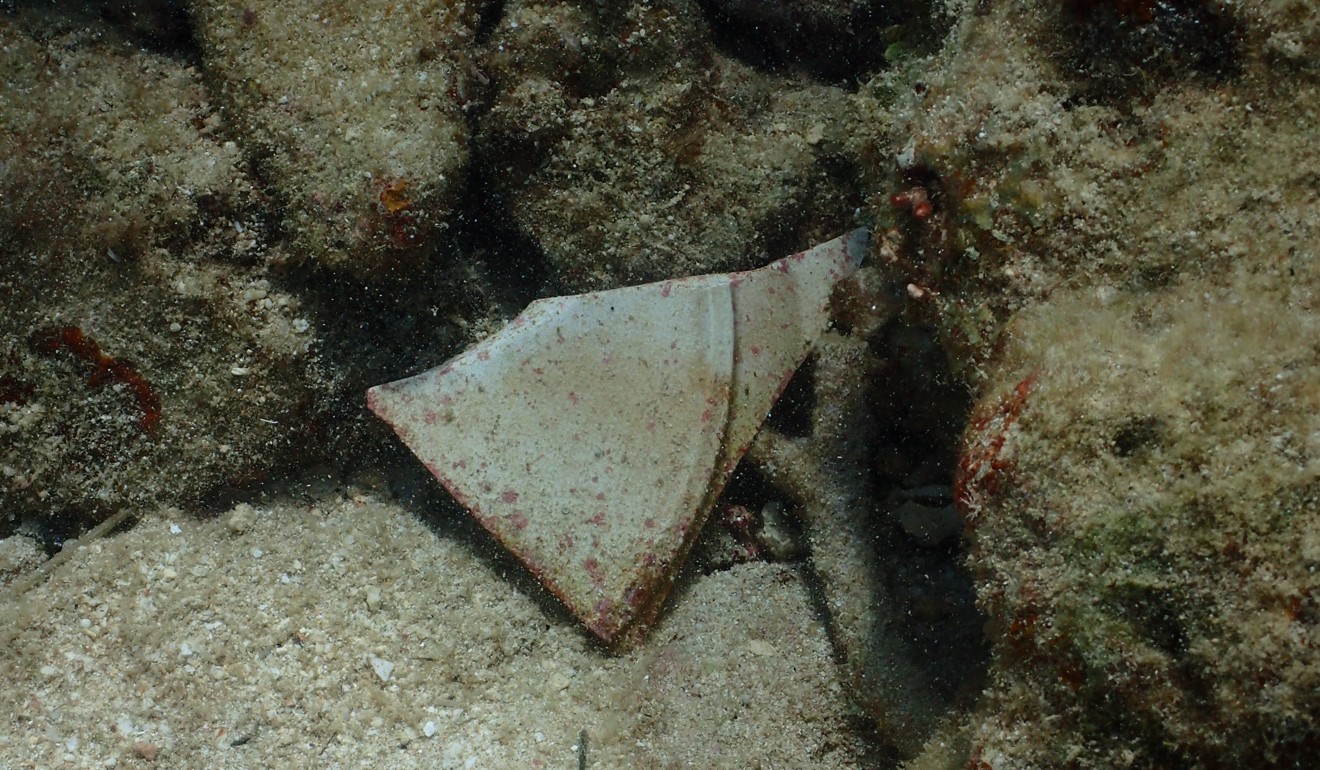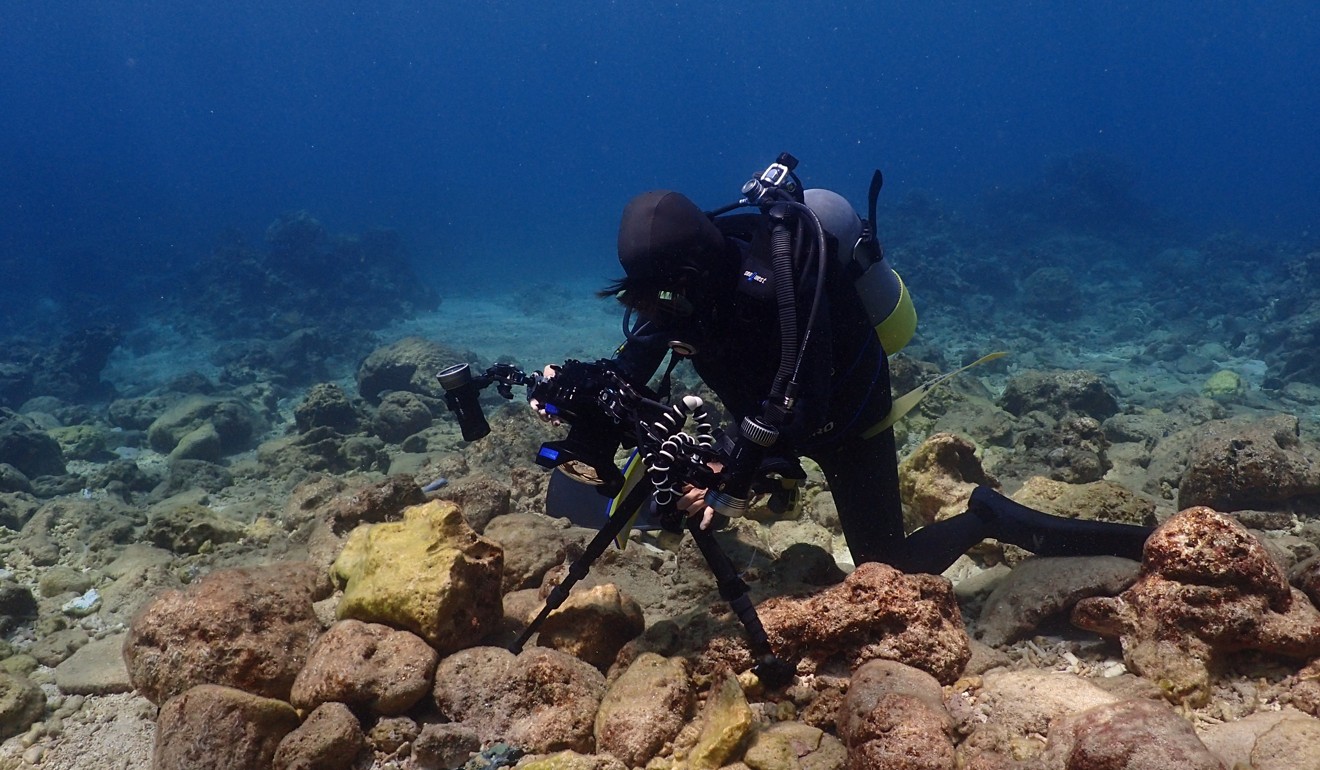
Ship that sailed from Hong Kong in 1872 found in Okinawa waters
- Mystery over Chinese pots found on British ship, the Benares, which sank in a tempest off Japan.
- Researchers are trying to trace relatives of four crew members who were buried locally
When the Benares sank during a typhoon off northern Okinawa in 1872, little was left to show the three-masted clipper had ever set sail from Hong Kong. Five of the British cargo ship’s 18-strong crew survived the tragedy and the bodies of a further four men were washed ashore. The remaining crew – including Captain James Anderson – were never found.
In the weeks after the typhoon raged across the ocean, it was likely debris from the wreck washed up on the beaches around the village of Ginama, on the far northwest coast of Okinawa. At some point in the intervening years, a large anchor was discovered and placed on display at the small port that is home to the community’s fishing fleet. Blocks of granite, each 60cm wide and 20cm thick, believed to have come from the wreck possibly as ballast, were used in the village graveyard. Otherwise, the Benares faded into maritime history.
Chiaki Katagiri, an archaeologist with the Okinawa Prefectural Archaeological Research Centre, said he was “incredibly lucky” to find evidence of the vessel’s final resting place on his first research dive into Ginama Bay, in 2003.
“We had done some research in and around the village and been shown what the local people call the Dutch Grave, which is where they buried the four sailors,” she said, acknowledging the lack of precise information about where the ship sank.
It was called the Dutch Grave because in the 1870s, Japan was still largely closed to the outside world and only the Dutch were permitted to trade, albeit at a limited number of ports. Accordingly, the Japanese assumed all outsiders were Dutch. The grave provided a vital starting point for the next phase of the search, jointly conducted with the Okinawa Prefectural Museum and Art Museum.

“We decided to do the first underwater search immediately in front of the Dutch Grave and were incredibly lucky to find the wreck site on the first dive,” Katagiri said. “We were able to identify on the seabed parts of a ship that is clearly Western in design.”
Those artefacts included a metal ventilation duct, a pulley, copper sheathing, nails, shards of European ceramics, wine bottles, a fork, a butter knife, stoneware jars and several ceramic bowls with Chinese designs. Perhaps unsurprisingly, none of the ship’s timbers remain intact.
The items were at depths of a mere two metres to eight metres, just a few hundred metres off the beach.
‘Holy Grail of shipwrecks’, with US$17 billion treasure aboard, is found
Financial constraints have prevented a full excavation of the site being carried out. Meanwhile, Katagiri and the Nansei Islands Archaeological Research Group have taken the research in a different direction. Initial archival research in Okinawa and Tokyo revealed the name of the previously unidentified wreck, while Yumiko Nakanishi, an archaeologist with the Osaka Prefectural Board of Education went to London and the Guildhall Library. Records there listed the Benares as a clipper weighing 822 tons that was completed in the US in 1860 and originally used to transport wool from Australia to Britain.
The records also showed the Benares departed Hong Kong for San Francisco on September 13, 1872, with a cargo of tea, sugar and rice but sought shelter from the typhoon in Ginama Bay on October 6. The storm was so violent, however, it sank the ship.

Further research at the National Archives in Kew, Britain, revealed the ship’s official registry and a wealth of additional information, including an addition to the registry in red ink dated March 1, 1873, stating the ship had been lost. Nakanishi was also able to confirm the address of the owners of the ship, although the district of London where the company was headquartered has been redeveloped and its former offices no longer exist.
The records found in Tokyo also show that while the local people could not communicate with the survivors, they fed and cared for them until they could be handed over to local authorities. They were later returned to Hong Kong and a wall clock was subsequently sent from the owners in London to the village as an expression of gratitude, although it was later destroyed in a fire.
Rigged with three masts and with two decks, the Benares was just over 50 metres from bow to stern and nearly 11 metres at her widest point. The paper trail also revealed the names of the ship’s owners and her previous masters, as well as a rudimentary contract for the crew that stipulated their meals – including bread, pork and a half-pint of rice on Sundays – while explicitly forbidding spirits and profane language.
Most poignantly, the documents found in Tokyo also named the crew on the Benares’ final fateful voyage and identified the four men buried in Okinawa as second mate Robert Dummelow, 24, Samuel Ruffle, the 28-year-old cook and steward from Sudbury in Suffolk, Andrew Johnson, an able seaman aged 22 from Sweden, and Frederick Brett, a 19-year-old apprentice from Southampton making his first voyage.

A number of mysteries remain, however, including the Chinese-style bowls that have been found but were not on the ship’s manifest. There were suggestions they were being transported to California as they were in demand among the state’s community of Chinese labourers.
While Katagiri, Nakanishi and the other members of the archaeological team intended to continue their research into the SS Benares, she noted there were many shipwrecks off Okinawa and never sufficient time – or funds – to explore and catalogue them all.
World’s oldest shipwreck discovered in Black Sea
“Recently we have been working with researchers from Kyushu University on the wreck of the USS Emmons, a US minesweeper that was attacked and sunk by kamikaze in March 1945,” Katagiri said. Only discovered by local fishermen in 2000, the ship lies on its starboard side in about 40 metres of water and the researchers have used multibeam bathymetry to create a high-resolution, 3D image of the vessel.
To date, researchers have nine confirmed wreck sites off Okinawa, with six of the total believed to be Western and no fewer than four of those wrecks British. Those vessels include the Indian Oak, a ship of the East India Company that went down off Chatan in 1776, and HMS Providence, a sloop of the Royal Navy that struck a reef off Miyakojima in 1797.
Yet Katagiri and Nakanishi have unfinished business with the Benares and, working with historians in the UK, hope to trace the relatives of the four men buried in Okinawa.
“The grave is cared for to this day by local people and we very much hope to be able to locate their descendants and for them to come to Okinawa to see the grave and the site of the wreck,” Katagiri said.

